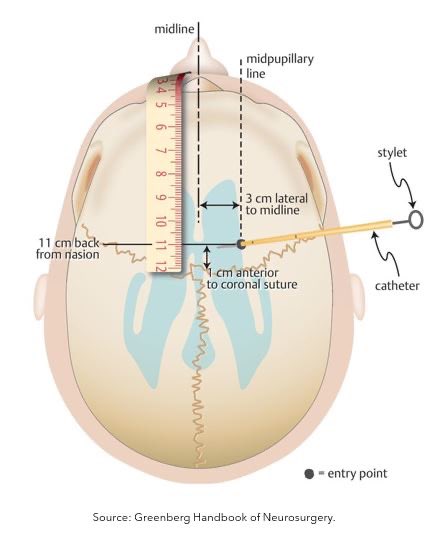Need help remembering how to compute a Glasgow Coma Scale (GCS) score?
A thread:
How to quickly and reliably compute GCS without having to look it up every time 😎👇🧵🧠
/1
A thread:
How to quickly and reliably compute GCS without having to look it up every time 😎👇🧵🧠
/1
The Glasgow Coma Scale (GCS) was first published in the 1970s and was intended to describe a patient's level of consciousness following traumatic brain injury.
/2
/2

GCS has 3 components:
👀 Eye-opening (4 points)
👄 Verbal (5 pts)
💪 Motor (6 pts)
Don't memorize this!
When I was a student, someone taught me to remember this simply as:
EYES (4 letters = 4 total pts)
WORDS (5 letters = 5 total pts)
MOVING (6 letters = 6 total pts)
/3
👀 Eye-opening (4 points)
👄 Verbal (5 pts)
💪 Motor (6 pts)
Don't memorize this!
When I was a student, someone taught me to remember this simply as:
EYES (4 letters = 4 total pts)
WORDS (5 letters = 5 total pts)
MOVING (6 letters = 6 total pts)
/3
Breaking it down further:
EYES (4 letters = 4 possible points!)
4 - spontaneous
3 - to voice
2 - to pain
1 - none
/4
EYES (4 letters = 4 possible points!)
4 - spontaneous
3 - to voice
2 - to pain
1 - none
/4

WORDS (5 letters = 5 possible points!)
5 - fully oriented
4 - confused
3 - inappropriate words
2 - incomprehensible sounds
1 or T - nothing or intubated (still give one point)
/5
5 - fully oriented
4 - confused
3 - inappropriate words
2 - incomprehensible sounds
1 or T - nothing or intubated (still give one point)
/5

MOVING
6 - follows commands
5 - localizes to pain
4 - withdraws to pain
3 - decorticate (I remember this b/c the French word for 'heart' is 'coeur' - arms flex toward the heart)
2 - decerebrate (arms extend away from the cerebrum)
1 - nothing
/6
6 - follows commands
5 - localizes to pain
4 - withdraws to pain
3 - decorticate (I remember this b/c the French word for 'heart' is 'coeur' - arms flex toward the heart)
2 - decerebrate (arms extend away from the cerebrum)
1 - nothing
/6

IMPORTANT:
-Score GCS by including the best response in each category - e.g., if half of one person’s body is following commands, but the other half isn’t, the motor score is still 6.
-It is important to realize that the lowest possible GCS score is 3 (NOT zero).
/7
-Score GCS by including the best response in each category - e.g., if half of one person’s body is following commands, but the other half isn’t, the motor score is still 6.
-It is important to realize that the lowest possible GCS score is 3 (NOT zero).
/7
ALWAYS CONFIRM THAT AN INTUBATED PATIENT IS NOT UNDER THE INFLUENCE OF PARALYTIC. THIS REQUIRES TRAIN OF FOURS.
I recommend this in ALL trauma scenarios, regardless of whether you know if/when paralytic was given.
Let me tell you a story.
/8
I recommend this in ALL trauma scenarios, regardless of whether you know if/when paralytic was given.
Let me tell you a story.
/8

While evaluating a trauma pt, I was told
that GCS 3T (coma). Pt reportedly was
intubated/paralyzed/sedated 2 hours
prior (long past the half-life of the
paralytic).
I brought a train of fours machine anyway
& tested the pt. No twitches -- aka, the
pt was still paralyzed.
/9
that GCS 3T (coma). Pt reportedly was
intubated/paralyzed/sedated 2 hours
prior (long past the half-life of the
paralytic).
I brought a train of fours machine anyway
& tested the pt. No twitches -- aka, the
pt was still paralyzed.
/9
Paralytic reversal was promptly
administered.
Pt immediately began following
commands AND opening eyes to voice --
aka, GCS was 10T (E3VTM6).
👀 👀
/10
administered.
Pt immediately began following
commands AND opening eyes to voice --
aka, GCS was 10T (E3VTM6).
👀 👀
/10
SUMMARY part 1:
🌀 GCS is used to convey a patient's
level of consciousness after brain injury.
It asks:
Do the eyes open?
Does the mouth speak?
Does the body follow commands?
The answers to these questions tell us
about the severity of the underlying brain
injury.
/11
🌀 GCS is used to convey a patient's
level of consciousness after brain injury.
It asks:
Do the eyes open?
Does the mouth speak?
Does the body follow commands?
The answers to these questions tell us
about the severity of the underlying brain
injury.
/11
SUMMARY part 2:
🌀 Accurate GCS testing is confounded
by medications commonly administered
in the trauma setting - e.g.,
neuromuscular blockade, sedation,
narcotics, &c. You must:
ALWAYS pause sedation.
ALWAYS confirm the absence of
paralytic (train of fours).
/12



🌀 Accurate GCS testing is confounded
by medications commonly administered
in the trauma setting - e.g.,
neuromuscular blockade, sedation,
narcotics, &c. You must:
ALWAYS pause sedation.
ALWAYS confirm the absence of
paralytic (train of fours).
/12




• • •
Missing some Tweet in this thread? You can try to
force a refresh

 Read on Twitter
Read on Twitter














